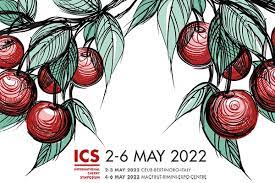International Cherry Symposium
Emilia-Romagna will be the world capital of cherries at the International Cherry Symposium (ICS), to be held from 2 to 6 May.
This international event will be attended by the industry’s elite and will consist of several events scheduled throughout the week: a two-day advanced training session held at the University Residential Centre of Bertinoro (2-3 May); a global symposium on key issues relating to the cherry tree (sustainability, varietal innovation, planting technologies and covering systems), which will take place at Macfrut in Rimini (4 May); an event focusing on global market trends with the participation of the industry’s key players (5 May); guided tours of major companies in the sector who will be attending Macfrut (5 May); a tour of the main cherry tree growers to get a firsthand look at innovative products (6 May).
International Spring School. Bertinoro, (2-3 May)
The International Spring School, which will be held at the University Residential Centre in Bertinoro, will focus on the topic of “Sustainable orchard management in a changing environment”. The fruit-growing industry, especially the cherry sector, is faced with huge challenges such as climatic, social and economic changes and increasingly pervasive globalisation.
The programme will consist of 10 seminars on key topics related to sustainable orchard management, along with interactive activities involving PhD students, professionals and lecturers. The two-day event will be managed and coordinated by the three organising universities (the University of Bologna, the University of Modena and Reggio Emilia and the Marche Polytechnic University), with the participation of international speakers and cherry tree specialists. The event will be held in English with a limited number of participants, with 30 places reserved for PhD students and young researchers and 30 places for professionals from all over the world.
International Cherry Symposium. Macfrut Rimini Expo Centre (4 May)
The world’s leading cherry tree experts will get together on the first day of Macfrut to take part in the 2022 International Cherry Symposium. The conference, which will take up a whole day during the trade fair, will host experts from the USA, Chile, Germany, France and Italy who will address key issues in cherry growing: from the economic sustainability of new cherry orchards to biotechnologies applied to varietal innovation and, to conclude, precision technologies applied to production, plant protection and postharvest handling.
Cherry Global Players. Macfrut Rimini Expo Centre (5 May)
The morning of 5 May will be dedicated to learning more about some of the world’s biggest cherry producers and marketers: global market strategies in the six leading countries in the industry (Turkey, Chile, the USA, Uzbekistan, Spain and Italy) will be discussed.
Guided tours at the trade fair. Macfrut Rimini Expo Centre (5 May)
In the afternoon, from 3:00 p.m. to 6:00 p.m., the spotlight will be on product and process innovations introduced by researchers and the industry in the cherry supply chain: varieties and rootstocks, multi-purpose covering systems, processing technologies and packaging. A group of professional experts will take those participating in Macfrut 2022 on several dedicated tours of the stands of the main companies that have invested in the cherry industry.
Cherry tree tour. Vignola and Cesena (6 May)
A firsthand look at the innovations introduced in the cherry industry: this will be possible during two field visits to plant nurseries, farms and cherry processing plants in the Emilia-Romagna region, which boasts approximately 3,000 hectares dedicated to cherry growing. A tour of the production area of the Vignola cherry, which is known for its state-of-the-art cultivation systems and IGP (PGI – Protected Geographical Indication) certified, high-quality cherries, is also scheduled. The second tour will take Macfrut 2022 guests to the hills around Cesena, where they will find out more about modern planting systems that use organic or biodynamic production techniques.
What the experts say
During the press conference presenting the ICS, two of the world’s leading cherry experts took the floor.
When asked what innovative solutions he would recommend to a fruit grower who would like to plant a new cherry orchard, Greg Lang from Michigan State University (USA) said: ‘Since planting an orchard is a decades-long commitment, it is essential to anticipate what the potential advances in technology will be over the next 25 years; for instance, just think of the speed at which technologies have evolved over the last quarter of a century. I would therefore advise all cherry growers to consider installing support structures and a “flat top” canopy training system that allows for mechanical topping. I would also recommend using motorised platforms for agricultural workers, tractor-mounted machine vision cameras, drones or autonomous vehicles for gathering images and data, and using the support structure not only in cherry orchards, but also for installing protective canopies in the orchard, such as rain, anti-hail or insect netting.’
Moritz Knoche, from the University of Hanover (Germany), focused in particular on the latest research into the cherry cracking phenomenon and how it can be addressed. ‘New results on this issue have emerged. The so-called “Zipper hypothesis” is still the most accepted explanation for cracking. The peel “unzips” like a zipper along the pectins of the middle lamella of the enlarged cell walls. Calcium may be able to stop this process, but it would require a concentration of calcium in the cell walls of the peel that is difficult to achieve even after several foliar applications. Several studies show that the idea that cherries are a homogeneous container of sweet juice is wrong. As a matter of fact, it has been shown that the distribution of sugars in the fruit is heterogeneous, which is probably due to the fact that the absorption process within the fruit, through the vascular system, is faster than distribution. This explains why the cracking phenomenon is so variable and provides a reasonable explanation for the fact that cherries can crack even after being packaged.’









